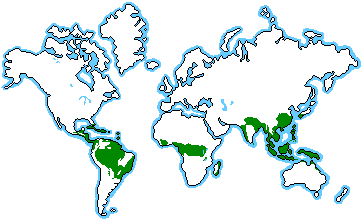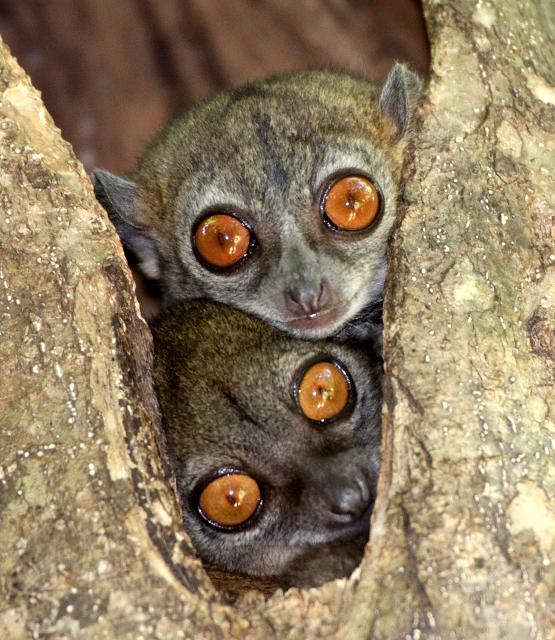
Kingdom:
|
|
Phylum:
|
|
Class:
|
|
Order:
|
|
Family:
|
|
Genus:
|
|
Species:
|
L. septentrionalis
|
Location:
The Northern Sportive Lemur is native to a minuscule region near the northern edge of Madagascar. The species' population is restricted to the remnants of forest north of the Irodo River, near villages (Ankarongana and Madirobe) and a small mountain.
Physical Characteristics:
This species of Lemur is nocturnal, and therefore has large front-facing brown eyes similar to that of a Tarsier. They are also arboreal (tree based), and move by jumping around from tree to tree. The "Sportive" aspect of their name is derived from their "boxing" stance when they feel threatened. They have pale brownish-grey backs, including a dark line that travels across its spine. Their undersides tend to be grey.
Social Behaviors:
Not much is known about these species as there are so few left to study. The Northern Sportive Lemur is believed to reprocess their food a second time in order to gain nutrients in the same process rabbits use. The bacteria contained in their bodies help ferment their food in their bodies, allowing it to have nutritional value when it is reprocessed. The males live alone as hermits until the mating season. Females will raise the child alone in a separate region.
Threats:
The Northern Sportive Lemur is a niche species. Simply put: the species has several very specific conditions that must be met in order to survive or call their perfect habitat. While they may have survived as a highly specialized species before, it is now their own downfall as their precious small habitat is destroyed through deforestation. A native species of Boa is also known to take some Northern Sportive Lemurs from their daytime resting places. These threats, in addition to a specific diet, wouldn't be so bad were it not for the remaining population. The species is also extremely vulnerable to local bushmeat hunters.
Remaining Northern Sportive Lemurs:
18
Conservation:
At this point not much can be done to save this species. The changes needed are in Madagascar's policies and enforcements against logging and bushmeat hunting. One can help organizations that are getting involved by visiting their local zoo or protesting wooden products emerging from Madagascar.
Accreditations:
http://www.iucnredlist.org/details/11622/0
http://www.arkive.org/northern-sportive-lemur/lepilemur-septentrionalis/
http://www.iucn.org/?11259/Primates-in-peril--conservationists-reveal-the-worlds-25-most-endangered-primates
http://www.cnn.com/2012/07/13/world/africa/madagascar-lemurs-threatened/index.html
http://www.cokesmithphototravel.com/Madagascar.html


whats their food?
ReplyDeleteanswer please.. thx
Flowers, Leaves, Bark, Their Faeces, Just any plant they can find
DeleteThey are my 2nd favorite animal. It's breaks my heart :_(
ReplyDeleteThank you
ReplyDeletehttp://www.lemuranimal.com/what-threats-do-lemur-facts/
lemur facts